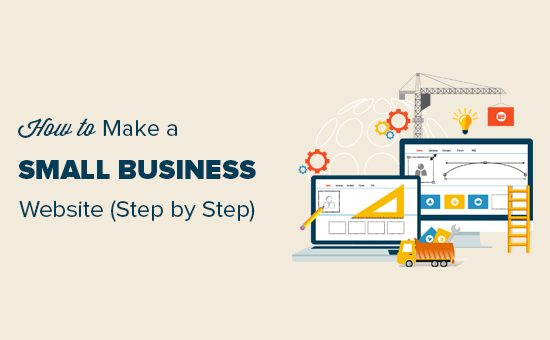In the digital age, having an online presence is crucial for the success of any small business. A well-designed website not only helps you reach a wider audience but also establishes credibility and trust among potential customers. However, for many small business owners, the idea of creating a website might seem daunting, especially when working with a limited budget. The good news is that it’s entirely possible to build a professional and effective website without breaking the bank. In this guide, we will walk you through the step-by-step process of creating a small business website on a budget.
Step 1: Define Your Goals and Plan
Before diving into the technicalities of website creation, take some time to define your goals. What do you want to achieve with your website? Are you looking to showcase your products or services, generate leads, or sell products online? Understanding your objectives will guide the design and functionality of your site.
Once you have a clear vision, create a plan outlining the structure and content of your website. Consider the pages you’ll need (e.g., Home, About Us, Services, Contact), and think about the information you want to include on each page. Planning ahead will save you time and help you stay focused throughout the process.
Step 2: Choose the Right Platform
There are various website-building platforms available, each catering to different needs and budgets. For small businesses on a tight budget, platforms like WordPress, Wix, and Weebly are excellent choices. They offer user-friendly interfaces and a wide range of customizable templates, making it easy for beginners to create a professional-looking website without the need for coding skills. If you are looking for website development in Birmingham then you can consult with best software houses.
Step 3: Select a Budget-Friendly Hosting Provider
Choosing the right hosting provider is crucial for the performance and reliability of your website. Look for hosting providers that offer affordable plans suitable for small businesses. Some popular options include Bluehost, HostGator, and SiteGround. These providers often have special deals for new customers, so keep an eye out for promotions to maximize your budget.
Step 4: Pick a Professional Template
A visually appealing website is essential for leaving a positive impression on visitors. Fortunately, most website builders come with a variety of templates that you can customize to fit your brand. Choose a template that aligns with your business’s aesthetic and industry. Customization options may include changing colors, fonts, and images, allowing you to create a unique look for your website.
Step 5: Optimize for Mobile Responsiveness
With an increasing number of users accessing websites on mobile devices, it’s crucial to ensure that your site is mobile-friendly. Many website builders automatically optimize your site for mobile, but it’s always a good idea to double-check and make adjustments if necessary. A mobile-responsive website not only provides a better user experience but also positively impacts your search engine rankings.
Step 6: Create Compelling Content
Content is king when it comes to engaging your audience and conveying your brand message. Write clear and concise copy for each page, focusing on the benefits your products or services offer. Use high-quality images that showcase your business in the best light. If you’re on a tight budget, there are numerous free stock photo websites where you can find visually appealing images for your website.
Step 7: Leverage Free and Low-Cost Tools
To enhance the functionality of your website without breaking the bank, take advantage of free and low-cost tools available online. For example, you can use Canva for designing graphics, Google Analytics for tracking website performance, and Mailchimp for basic email marketing. These tools can significantly contribute to the success of your online presence without requiring a substantial financial investment.
Step 8: Implement Basic SEO Practices
Search engine optimization (SEO) is crucial for increasing your website’s visibility on search engines like Google. While hiring an SEO expert may be out of reach for a small business on a budget, you can still implement basic SEO practices yourself. This includes optimizing your website’s meta tags, using relevant keywords in your content, and creating a sitemap. Additionally, regularly updating your website with fresh and relevant content can positively impact your search engine rankings. If you are in UK then there are best SEO agency in Birmingham who can help you in ranking your website.
Step 9: Set Up Social Media Integration
Social media is a powerful tool for promoting your small business and driving traffic to your website. Ensure that your website includes social media buttons or widgets that link to your business’s social media profiles. This not only encourages visitors to connect with you on social media but also helps with online visibility and brand awareness.
Step 10: Regularly Update and Maintain Your Website
Building a website is not a one-and-done task; it requires ongoing maintenance and updates. Regularly check for broken links, update content, and ensure that your website’s software is up to date. This not only improves the user experience but also contributes to the security and performance of your site.
In conclusion, creating a small business website on a budget is entirely achievable with careful planning and the right tools. By following these steps, you can build a professional and effective online presence that helps your business thrive in the competitive digital landscape. Remember, it’s not about the size of your budget but the strategic use of resources and a commitment to delivering a positive user experience for your customers.




